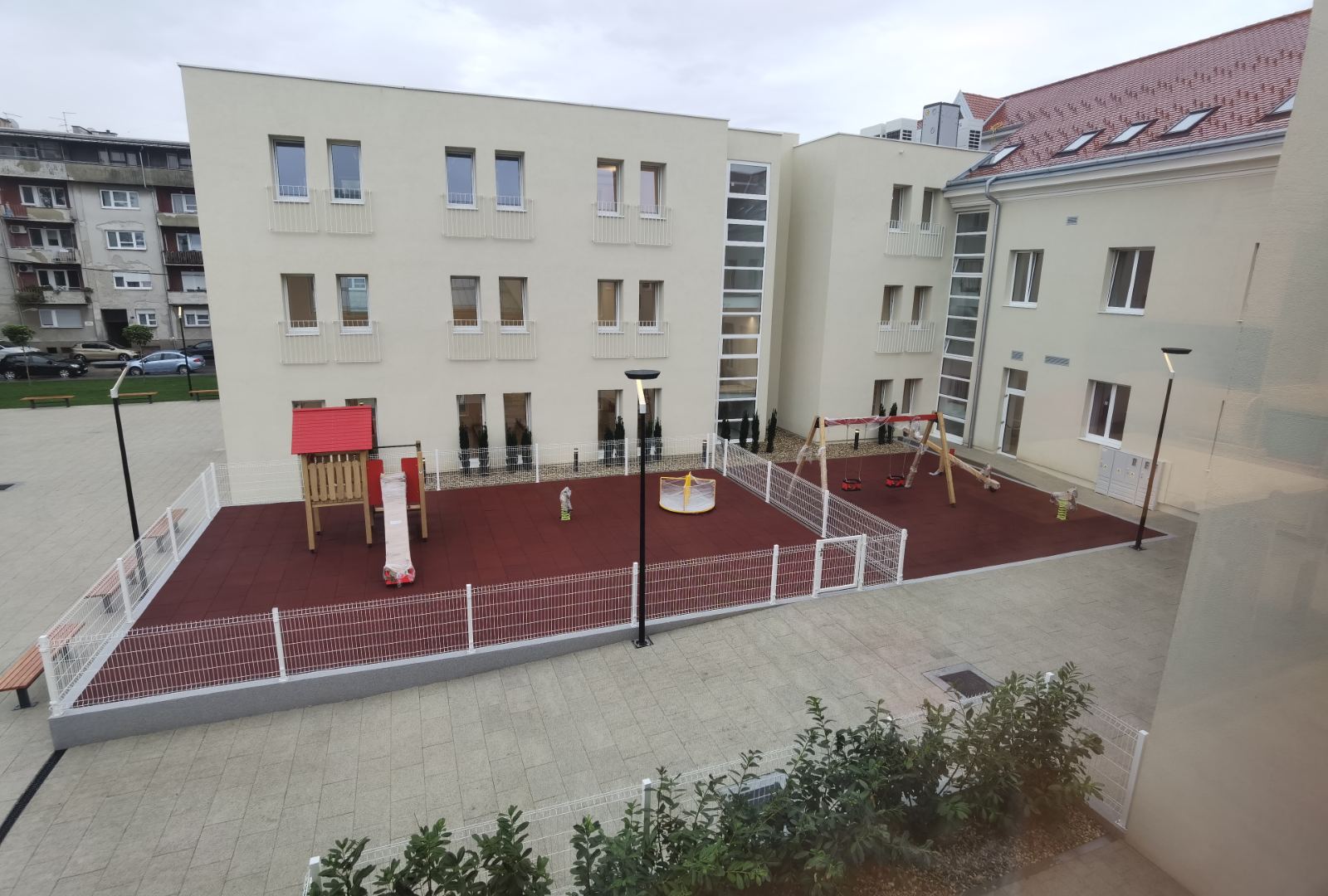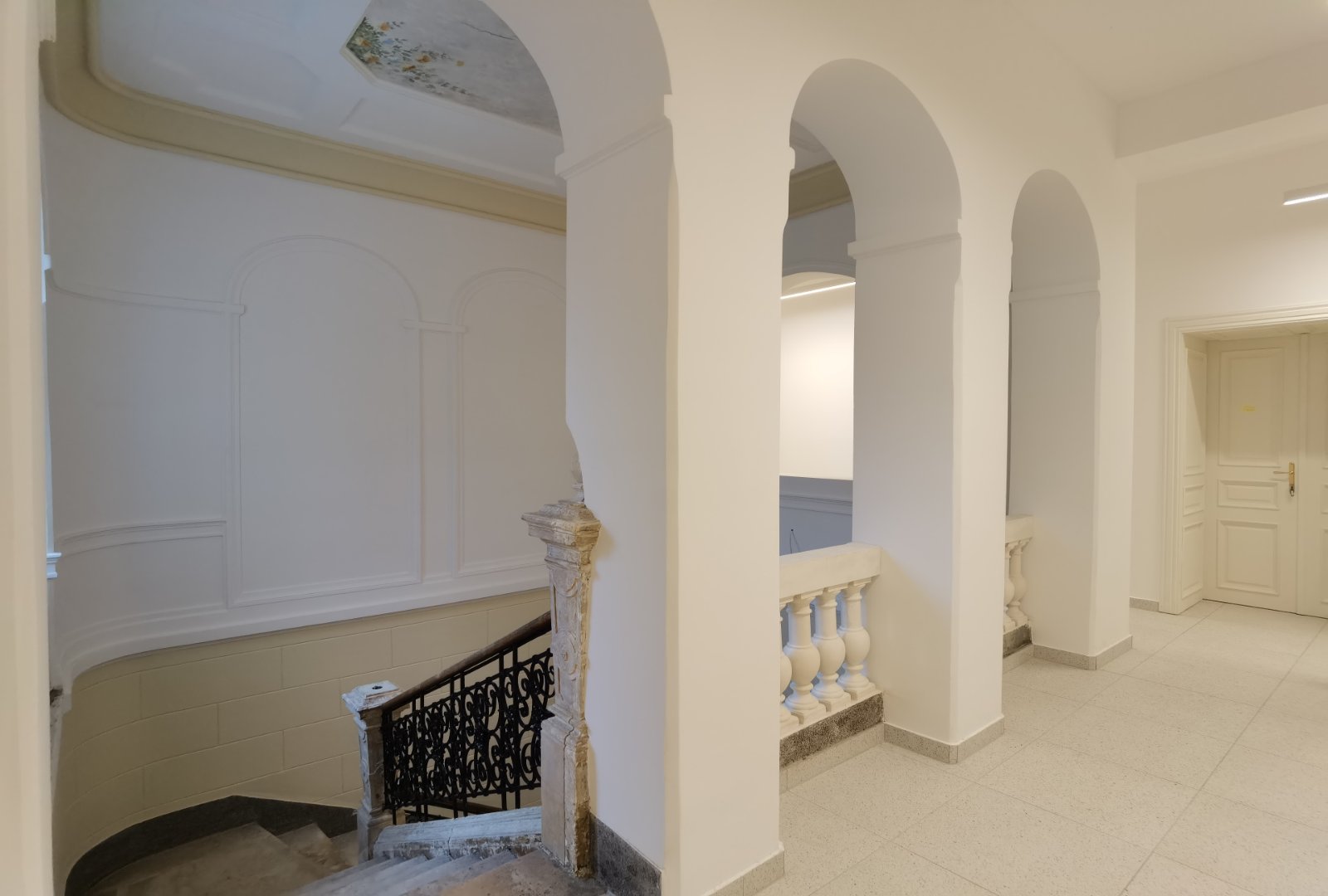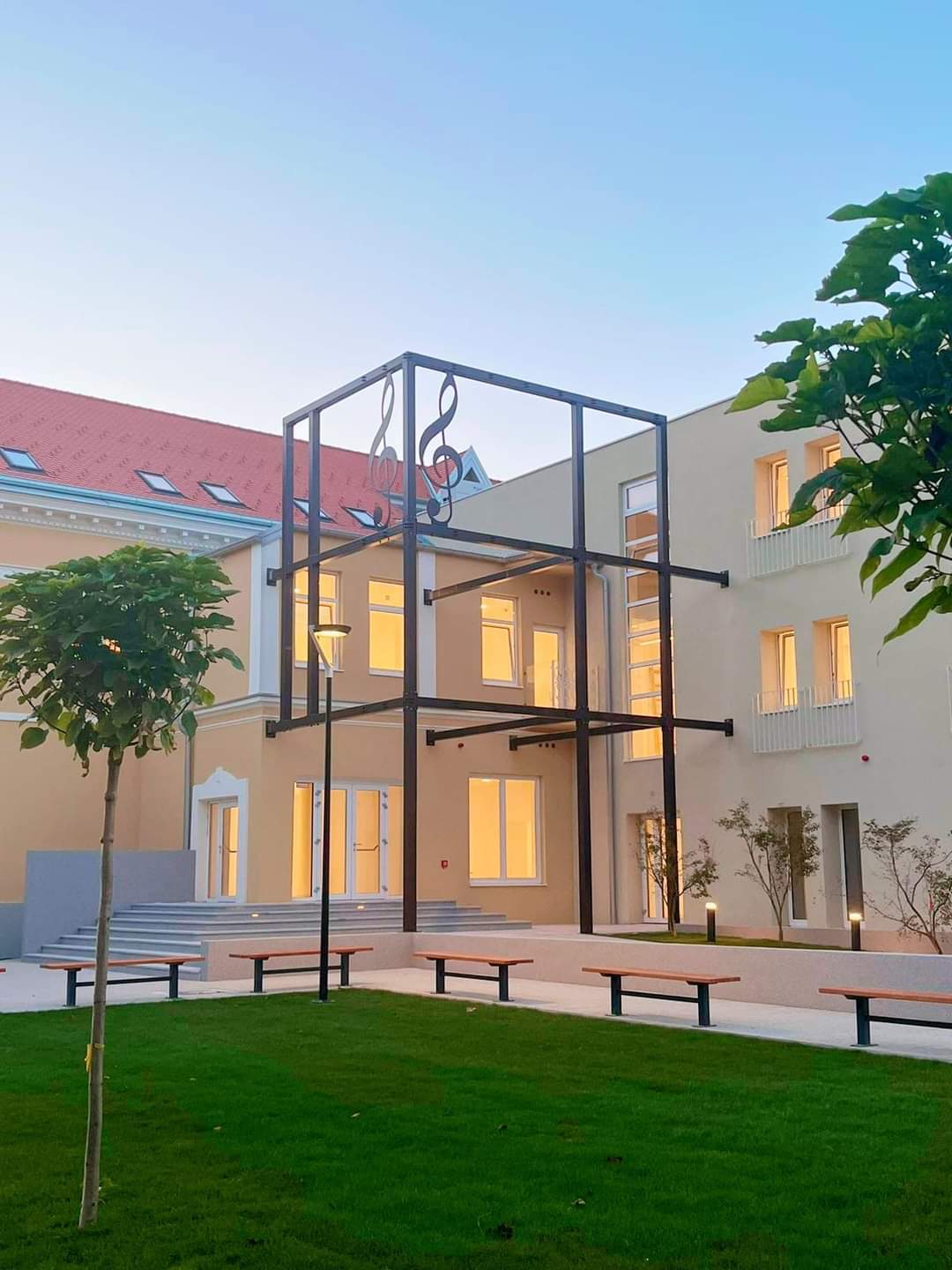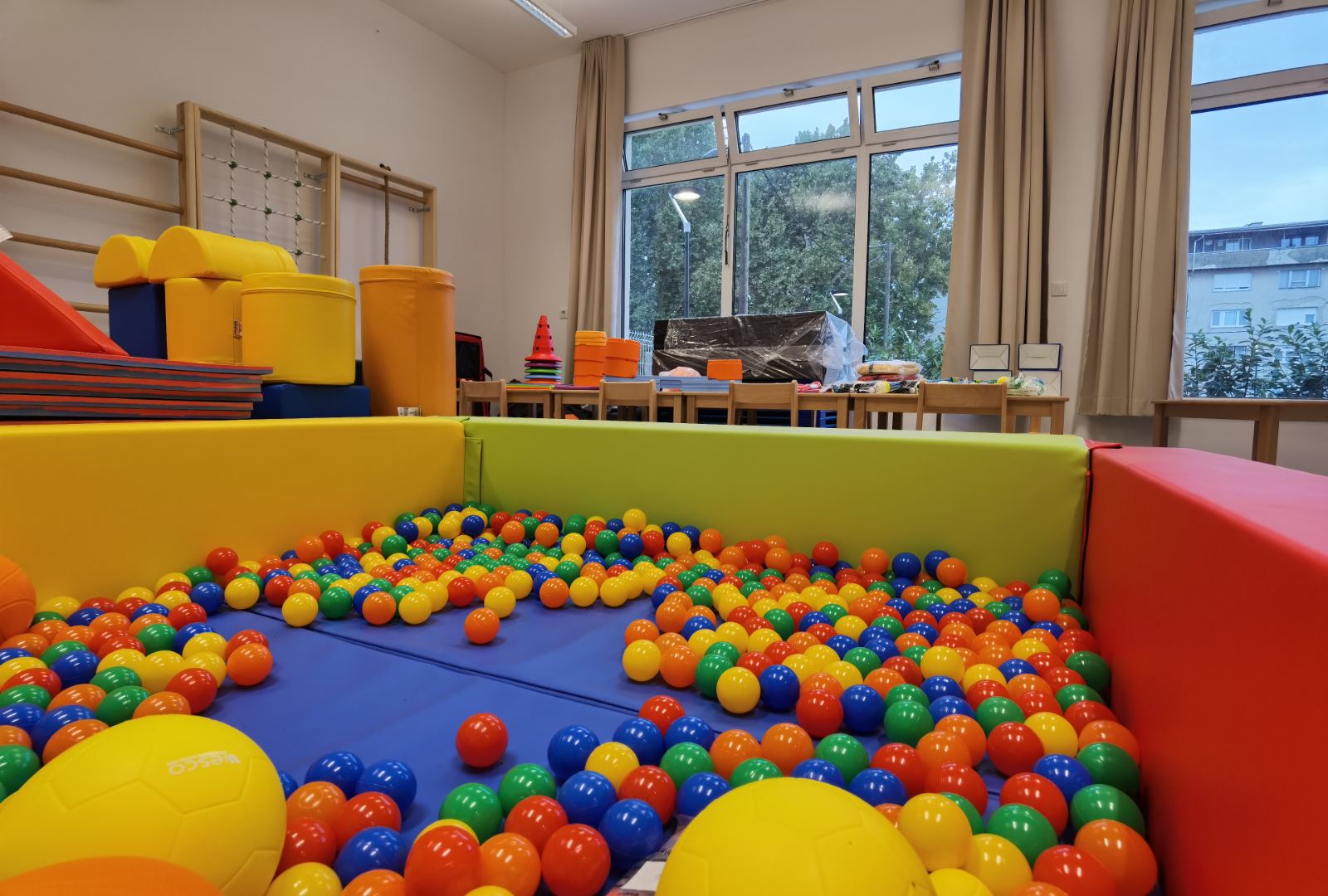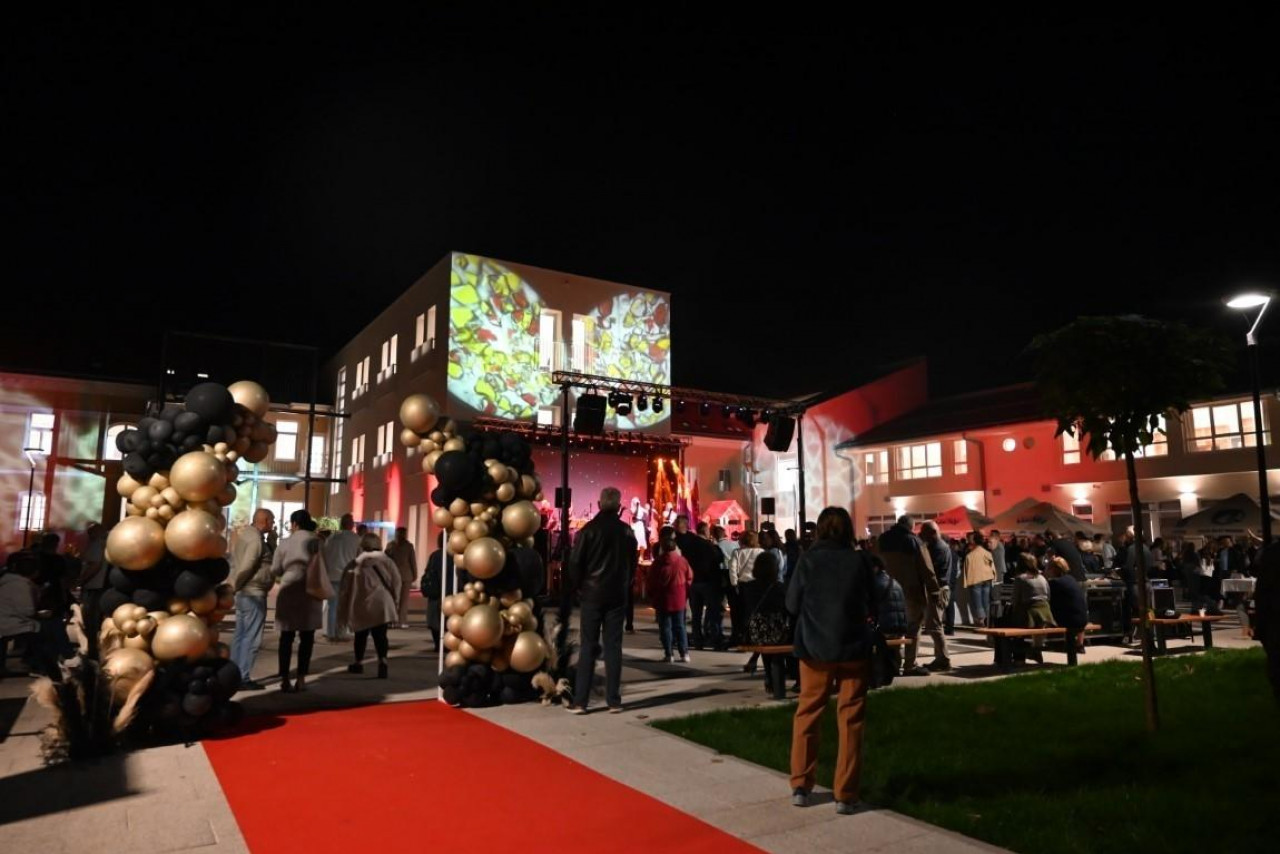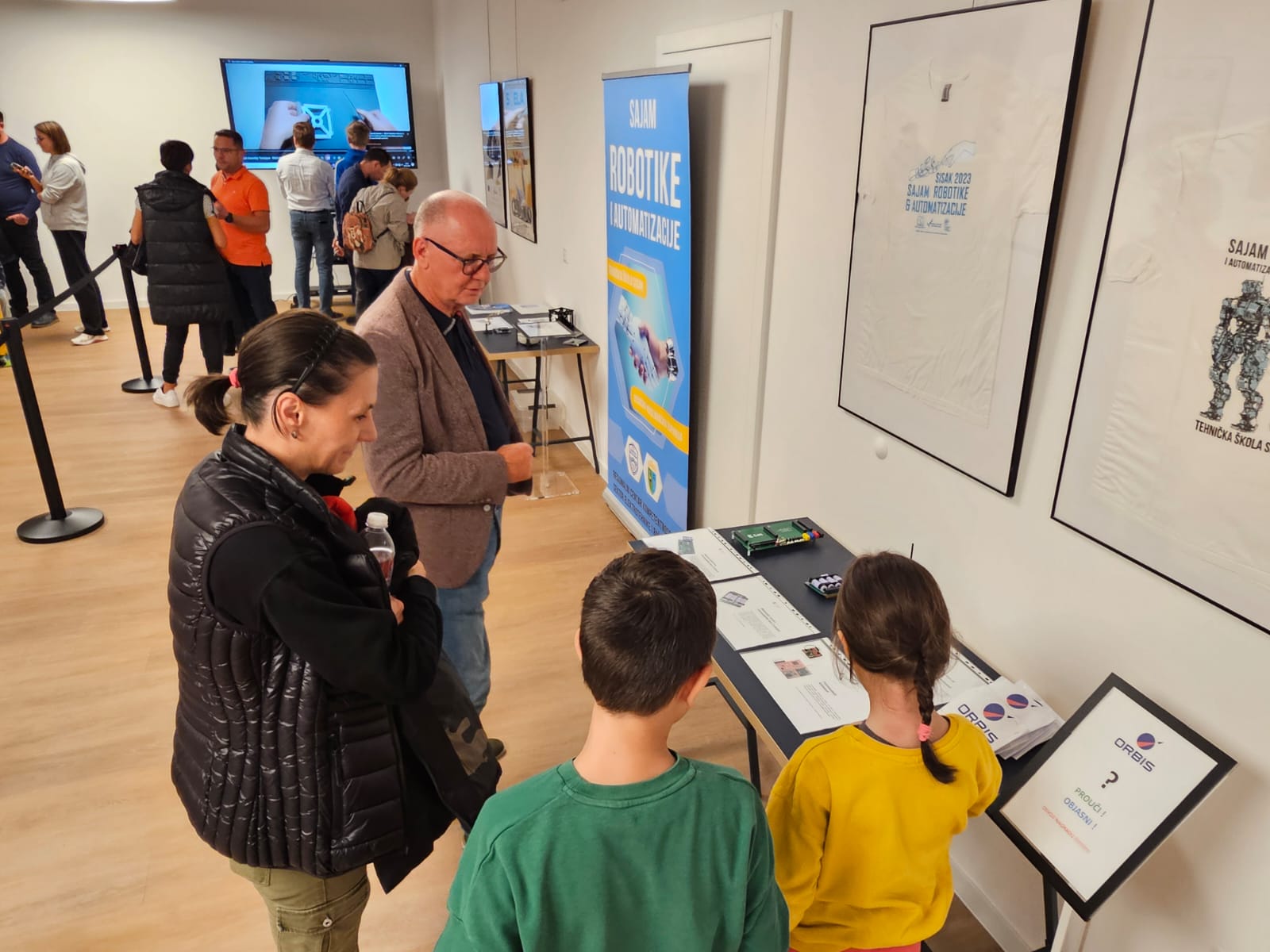Regaining a sense of belonging
Rimska street 19
Educational and cultural center in Rimska 19, Sisak, Croatia
Sisak-Moslavina county built, renovated and arranged an Educational and Cultural center in Sisak at Rimska Street 19. The County gave to previous buildings (police station with a prison heavily damaged by 2020 earthquake) a new public, educational and cultural purpose. On almost 4,000 square meters in the very center of the city, the first county kindergarten, the Music School, the gallery spaces of the County Cultural and Historical Center and a cafe run by students and teachers.
Croatia
Regional
Sisak-Moslavina county, Kontinentalna Hrvatska
Mainly urban
It refers to a physical transformation of the built environment (hard investment)
Yes
2024-09-20
Yes
EU Solidarity Fund
No
No
As a representative of an organisation
Sisak-Moslavina county has created an aesthetic, functional and sustainable urban environment which inspires creativity, collaboration, education and cultural activities for different age groups. The Rimska 19 project has renovated completely damaged former premises of the police station and prison in the very heart of the City of Sisak. The new complex is built on cultural heritage site protected by the Croatian Ministry of culture so its renewal has been carried out in accordance with the rules on the protection and preservation of cultural heritage.The whole surrounding area has been open for public for the first time and completely transformed.
The site has been enriched with new functions including kindergarten with outdoor playground, primary and secondary music school, galleries of the Cultural-hostorical center of Sisak-Moslavina and a coffee bar as a practicum for vocational high school students. The Rimska 19 project has benefited from local historical heritage as it proved to be the basis for its further development.
In that way, it has been reached social collaboration and the sustainability of local culture and traditions. Rimska 19 will lead to better living conditions of local people and give citizens a stronger sense of belonging. The very center of Sisak, previously abandoned and even restricted area has become live, more attractive in a more socially just place.
The site has been enriched with new functions including kindergarten with outdoor playground, primary and secondary music school, galleries of the Cultural-hostorical center of Sisak-Moslavina and a coffee bar as a practicum for vocational high school students. The Rimska 19 project has benefited from local historical heritage as it proved to be the basis for its further development.
In that way, it has been reached social collaboration and the sustainability of local culture and traditions. Rimska 19 will lead to better living conditions of local people and give citizens a stronger sense of belonging. The very center of Sisak, previously abandoned and even restricted area has become live, more attractive in a more socially just place.
Regenerating
Transforming
interactive venue
multi-generation
multi-function
Key objective of the Rimska 19 project was to transform an abandoned and damaged area in the Sisak city center and establish modern infrastructure for cultural heritage protection and development of creative, cultural and educational activities. The whole surrounding area has been opened for public for the first time and completely transformed. In that way, citizens got a new public space for various activities what was missing before in the city center. The site has been enriched with new public functions that gather all generations including kindergarten with outdoor playground, primary and secondary music school, galleries of the Cultural-hostorical center of Sisak-Moslavina and a coffee bar as a practicum for high school students.
In that way, it has been reached social collaboration and the sustainability of local culture and traditions. This project has involved different groups such as local inhabitants, NGOs, education institutions and private actors, to increase stakeholders’ awareness and capacity for culture heritage protection and development of new or modern cultural and educational activities.
In that way, it has been reached social collaboration and the sustainability of local culture and traditions. This project has involved different groups such as local inhabitants, NGOs, education institutions and private actors, to increase stakeholders’ awareness and capacity for culture heritage protection and development of new or modern cultural and educational activities.
The design of the renewed venue reflects the cultural heritage of the city of Sisak on many levels and at the sime time it writes its new period with children and youth in the forefront. The goal was to create a venue which represents the classic shapes of previous buildings but adds modern, green, inclusive and human centric elements. Next to the building itself is a construction dominated by a treble clef, and the floor is paved in a way that represents a keyboard. The result has encouraged the citizens to spend quality time in this pleasant environment and connect to the various cultural and educational elements, but also to each other. New spaces now serve as interactive venues for education, culture, training, co-production and knowledge transfer for different public, civic and economic activities.
New buildings surround a square dominated by a large stage, and the entire area is decorated with benches and newly planted greenery.
New buildings surround a square dominated by a large stage, and the entire area is decorated with benches and newly planted greenery.
Rimska 19, designed as public space has room for everyone: the design process paid special attention to the needs of every age group, children, youth, elderly people, citizens with disabilities, and affordability was also a key goal. An inclusive space now has plenty of opportunities for the citizens without having to spend any money. Not only did the project create plenty of free seats, meeting points, but the visitors of the area can also access exhibitions, pieces of history such as front door to previous prison. The door has been renewed and stands at the venue location as a reminder to the past time and previous function of the building. The space has opened up by replacing the jail yard with the stage and auditorium around it, which is now spacious enough for a bigger crowd, visitors can now enjoy concerts, plays and other public events for free. In the project the gallery created a space for free exhibitions that host local artists. The meeting rooms are now available to NGOs, youth groups, local artists, schools and any other citizens' groups to meet, work and exhibit. The construction of kindergarten and the playground for children were planned in cooperation with teachers and pedagogues.
Around the Rimska 19 complex has been built new path for pedestrians and cyclists. The caffee bar that will be run by students set up terrace that will be open and attract even more people.
Around the Rimska 19 complex has been built new path for pedestrians and cyclists. The caffee bar that will be run by students set up terrace that will be open and attract even more people.
As already mentioned, citizens have gained a new venue that offers different educational and cultural activities, but also serves as a point for gathering in their leisure time. Different non-governmental associations regularly use the space to hold public forums and other forms of gathering (small fairs, workshops, etc.). Painters, sculptors and other artists, whether amateurs or academically educated, were given space to set up exhibitions that are open and free to all citizens.
In parallel to mentioned activities, all citizens who visit the venue will learn about the cultural heritage since many elements of previous buildings were renewed and protected.
Recently, 8 local NGO's received space for use for its offices and activities. In that way, civil society has been strengthen and their activities will be more accessible to citizens.
In parallel to mentioned activities, all citizens who visit the venue will learn about the cultural heritage since many elements of previous buildings were renewed and protected.
Recently, 8 local NGO's received space for use for its offices and activities. In that way, civil society has been strengthen and their activities will be more accessible to citizens.
The Croatian Ministry of Culture prescribed provisions for the protection of cultural heritage that were applied during the renovation of buildings.
Coordinated by the Sisak-Moslavina county, the teachers and students of the music school worked on the proposal for the design and functionality of their space, as well as the experts of the Cultural and Historical Center of Sisak-Moslavina County. A special challenge was to turn the space of the former prison into a kindergarten that will become the first in the city to offer new educational methods (e.g. STEM, music), so educators and parents were involved in its design. Professors and students of the hospitality department of the Viktorovac High School proposed arranging a practicum in which they will do practice and run it as a real coffee bar. All users of Rimska 19, their guests, as well as other citizens will meet in this space, who will thus contribute to the professional development of students and regularly get information about all activities in Rimska 19.
Coordinated by the Sisak-Moslavina county, the teachers and students of the music school worked on the proposal for the design and functionality of their space, as well as the experts of the Cultural and Historical Center of Sisak-Moslavina County. A special challenge was to turn the space of the former prison into a kindergarten that will become the first in the city to offer new educational methods (e.g. STEM, music), so educators and parents were involved in its design. Professors and students of the hospitality department of the Viktorovac High School proposed arranging a practicum in which they will do practice and run it as a real coffee bar. All users of Rimska 19, their guests, as well as other citizens will meet in this space, who will thus contribute to the professional development of students and regularly get information about all activities in Rimska 19.
The presevation of cultural heritage with added new and modern functional elements made the main deisign and implementation of the project. Different holders of individual activities in close cooperation determined the schedule of activities and functions of the new building. At the same time, the protected elements of the previous buildings got their place in the new space, whose functions are carried out unhindered.The preparation and implementation of this project built the capacities of the County and all users of the new premises and strengthened their cooperation. By carrying out activities in a new space, new ideas appear every day and the cooperation between the involved stakeholders is getting stronger.
Until now, no project has brought together different institutions and users of different generations and age groups in one place.The project also showed how different users can complement each other and develop cooperation. Children grow up with the sounds that come out of the music school, all visitors have the opportunity to visit open exhibitions or refresh themselves in a caffee bar run by students, which they have never had the opportunity to do before. There are many more events and activities ahead of Rimska 19 because every day it attracts new visitors and enables the creation and implementation of new ideas.
Project has used participatory approach in its planning and implementation phases. Future Rimska 19' s content plans were publicly available, even on large billboards.the bearers of activities in the field of culture and education (kindergarten, music school, vocational school practicum) participated in the detailed planning and design of all the functions of the space in which they now operate.The project holder, Sisak-Moslavina County, regularly held coordination meetings with the contractor, and representatives of the Ministry of Culture closely monitored all works related to the protection and presentation of preserved parts of cultural heritage
The very idea of transforming a demolished and neglected public space into a living center for children, young people, culture and events is the specialty of the Rimska 19 project. In the beginning, this brave idea was met with doubts, but with the beginning of the renovation and construction, it gained more and more admirers. Now Rimska 19 is the pride of the entire city and all citizens can enjoy a space that was not available or open to them before.This transformation of public space further strengthened trust between citizens and local government.
The project deals with demographic challenges and provides children, young people and families with a place and content for their upbringing, education and growing up. The project also enables all generations to come to an open place for socializing, learning and gaining new experiences and new acquaintances.The demographic problem facing Europe and also Croatia has not only reduced the number of young people, but also increased the number of single households, i.e. people who rarely have the opportunity to attend some events or just go to a place where they can spend quality free time.
The renewal and construction of Rimska 19 project venue has been finished in 2024. Primary and secondary music schools are attended daily by 367 students who had no music school premises since 2020 since the old music school has been heavily damaged in the earthquake. The galleries of the Cultural and historical center regularly prepare and hold exhibitions of local artists, but at the same time they are also a space for holding various gatherings, public forums and education. So, for example, a public debate on the new Youth Program of Sisak-Moslavina County was held in the space, which brought together their representatives from all parts of the county. Also, Museum night has been organised for the 1st time ever on the 31/1/2025 where visitors could view the exhibition and participate in the interactive workshops related to cultural heritage. The kindergarten has started its work and is attended by 50 children. Recently, Sisak-Moslavina county has allocated space for the work of 8 non-governmental associations operating in the field of culture and they are also located in the Rimska 19 complex..
It is still early to measure all indirect beneficiaries but since the Rimska 19 venue is open to all citizens through various activities (especially concerts, exhibitions, public debates) its impact is relevant for all the city of Sisak citizens and also to all nearby places and towns.
It is still early to measure all indirect beneficiaries but since the Rimska 19 venue is open to all citizens through various activities (especially concerts, exhibitions, public debates) its impact is relevant for all the city of Sisak citizens and also to all nearby places and towns.

